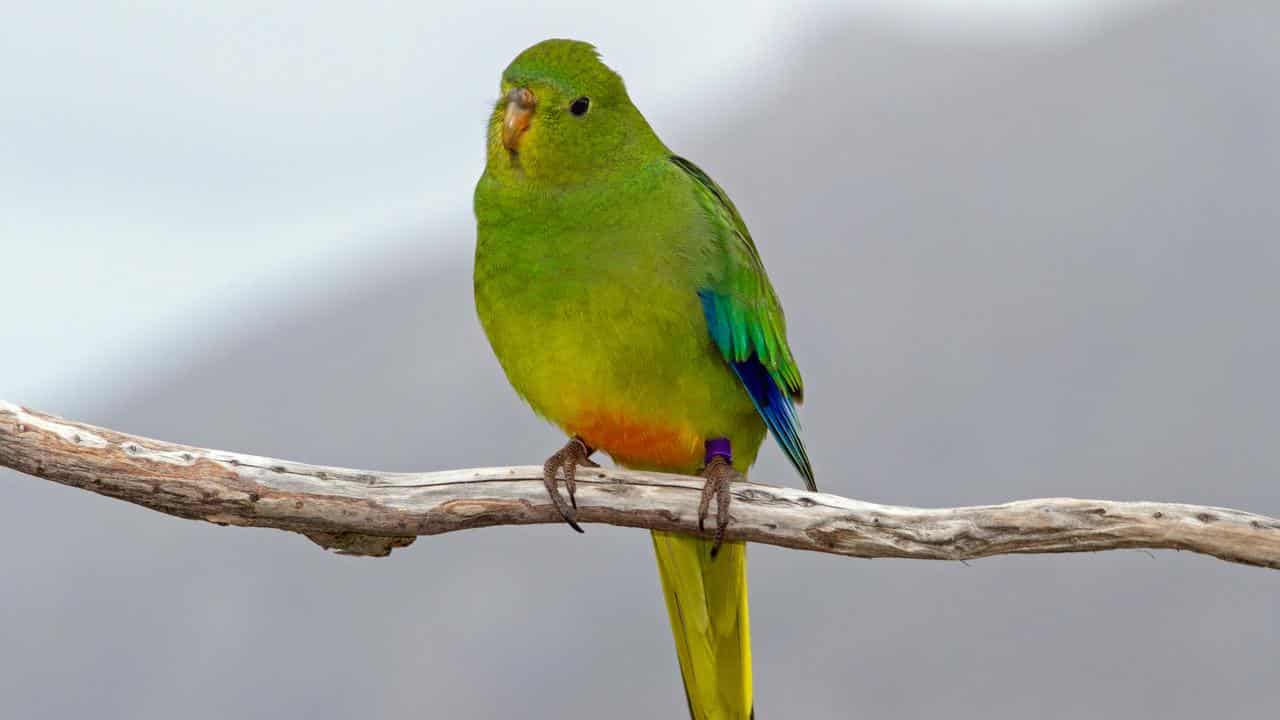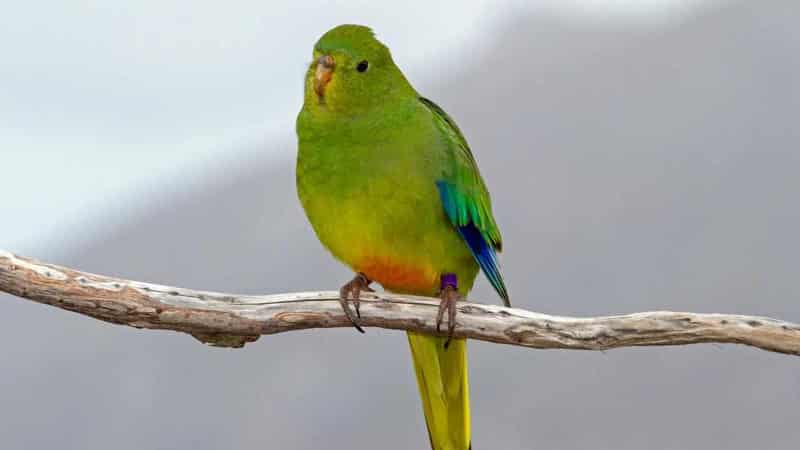
One of Australia's most spectacular looking birds, the critically endangered orange-bellied parrot, is barely hanging on as a species and faces a new hidden threat to it's existence.
A study has revealed a multitude of previously unknown viruses in captive parrots which are being bred to bolster the wild population - of which there are now only about 70 individuals.
The findings have raised concerns that if the birds are released they could spread the viruses to parrots in the wild.
It's not yet known if any of the viruses cause disease in the birds.
The team behind the study, including James Cook University Microbiologist Subir Sarker, identified 11 viruses being harboured between 40 of the captive-bred parrots in two different aviaries - six of which had not previously been discovered in the bird before.
Distinctly recognisable by their brightly-coloured feathers, orange-bellied parrots only breed in Tasmania during summer with most of the population migrating to coastal Victoria and South Australia for winter.
Dr Sarker tested faecal samples taken in 2021 from captive-bred parrots housed at Zoos Victoria, with the analysis eventually revealing 11 viruses belonging to the families Adenoviridae, Circoviridae, Parvoviridae and Picornaviridae.
“This parrot already faces numerous threats to its survival in the wild, including habitat loss, predation and small population impacts," Dr Sarker.
"Conservation of the wild orange-bellied parrot population is heavily reliant on using parrots from a managed captive breeding program.
“It’s now up to Zoos Victoria and conservation authorities, including the Orange-bellied Parrot National Recovery Team, to decide how they will manage this risk."









